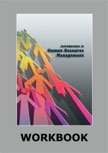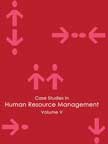Volvo's HR Practices - Focus on Job Enrichment |
ICMR HOME | Case Studies Collection Please note: This case study was compiled from published sources, and is intended to be used as a basis for class discussion. It is not intended to illustrate either effective or ineffective handling of a management situation. Nor is it a primary information source. |
||||
ExcerptsThe HR ProblemVolvo was among Sweden's leading employers with employees numbering 41,000 in company-owned plants. Its dealer network provided employment to an additional 10,000 people as of 1973. An additional 15,000 people were employed through Volvo's sub-contractors. Volvo's products were marketed in 120 countries with 75% of its total production exported mainly to other European countries and the US... The Job Enrichment Experiments
The New HR Initiatives
Volvo introduced three new HR programs in the late 1970s and early 1980s.
These were Match Project, Full Rulle (Full Speed Ahead) and Dialog.
End of the Socio-Technical Approach?While Volvo was going ahead with its human-centric approach, the external market forces in the automotive industry were changing. This forced the company to take serious measures, which stopped the progress of its job enrichment initiatives. In the early 1990s, with the declining demand for cars in the global market, it was no longer feasible for Volvo to continue operating in relatively smaller facilities like Kalmar and Uddevalla... Exhibits
Exhibit I: The Volvo Way |
Case Studies Links:-
Case Studies,
Short Case Studies,
Simplified Case Studies.
Other Case Studies:-
Multimedia Case Studies,
Cases in Other Languages.
Business Reports Link:-
Business Reports.
Books:-
Textbooks,
Workbooks,
Case Study Volumes.



